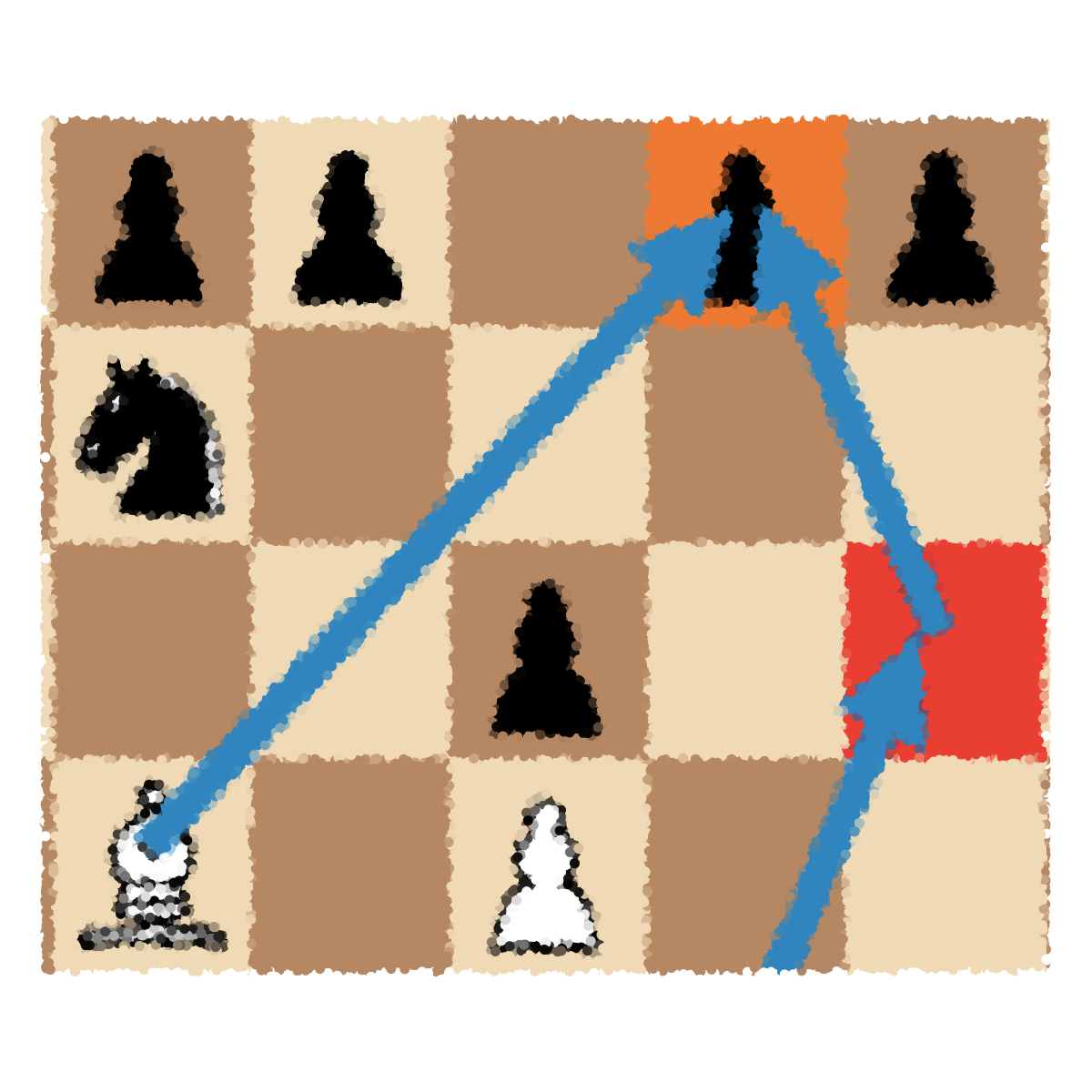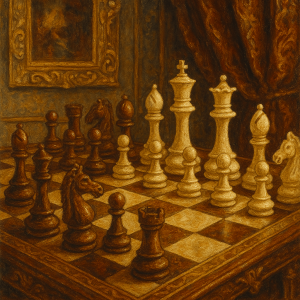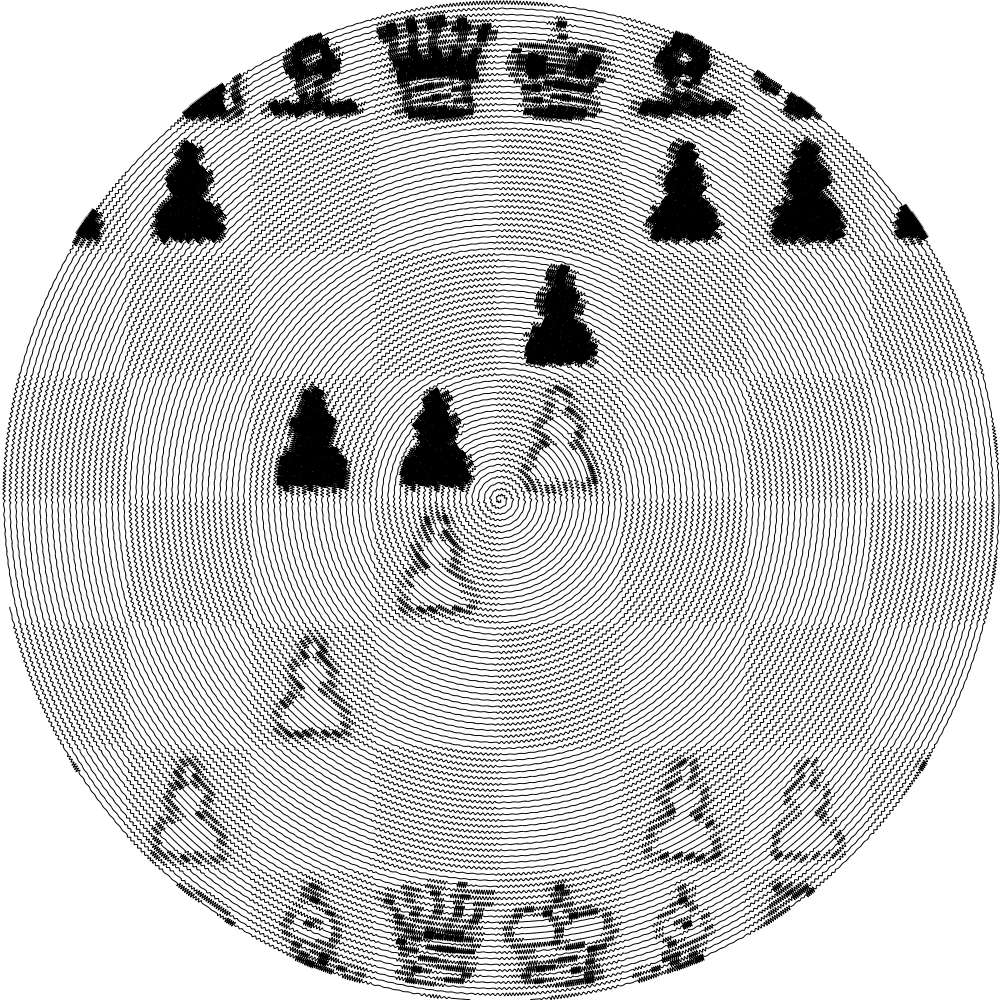The Italian Game is one of the most important opening systems of Chess. It can lead to the sharpest games ever or the most subtle positional battles. The Giuoco Piano usually belongs to this second category, with some exceptions !
This position is already a crossroad for Black. Black can choose to answer with the quiet Hungarian Defense or the Semi-Italian Game, or, more critically, with the Two Knight’s Defense.
In the Two Knights Defense, White usually gets a lot of activity by playing the Knight to g5.
Knight to h6 is often the perfect reply to Ng5, when Black can play it ! Of course, it means that Black has not played the Knight to f6 beforehand.
Once it is clear for everyone that White should not try too hard to target the f7 pawn in this particular line, one may wonder what is White trying to achieve in the Giuoco Piano ?
You should try to get a strong pawn center c3-d4-e4 of course, this is your main chance for an advantage with White. Not to say that the two other ideas should be completely discarded: you may have to opt for a queenside push or a kingside attack, but less often.
The Main Line Of The Giuoco Piano
Once we have said that, the best way to actually get this pawn center is to play c2-c3, then d2-d4 as fast as possible: this is the main line and here is how it develops.
The Real Main Line
One thing that must absolutely be noted about this main line is that it is very forcing. Sure, many times, Black only has one move that keeps the position balanced, but if Black knows it, White is more or less forced into this middlegame where a lot of the initial tension has disappeared. Also, White must be prepared to play with the isolated Queen’s Pawn.
Or is it actually forcing ? Black and White have a few ways to deviate in the main line. We are going to check three correct ways to play something else, one for Black and two for White.
White Plays 6. e5
As mentioned before, the main line of the Giuoco Piano is forcing, up to a certain point ! The first player getting an interesting deviation is White.
Nf6-e4 also seemed possible at first sight. It deserves a quick look.
This 6. e5 move is not at all a sideline and this is a line often picked by Grandmaster, so you can adopt it confidently: there is no refutation for Black !
White Tries a sharp gambit with 7. Nc3
The next possibility we will look at is a bit unsound, but very dangerous in practical play !
The previous line is the only one that promises Black a small advantage. Other replies are at least equal for White.
What is remarkable in this line starting with 8… Nxc3 is that everything seems fine for Black… until it doesn’t ! It is hard to see the danger coming and easy to get greedy.
Let’s make a last note on this 8… Nxc3 by saying that Black could have equalized with a timely d7-d5. Thus this line is not bad in itself for Black ! It is only very dangerous in practical play.
Finally, Black can try another defense, that seems strange, but is also a very good way to neutralize White’s initiative easily.
This line is a funny and efficient way for Black to answer to the Nc3 gambit. Yet White will still try to build an attack on the Kingside so everything is not done yet !
This is the conclusion of this line 7. Nc3 called the Greco variation, from the name of the Italian player who studied it in the 17th century. Now one more deviation from the standard line, and we will be done with the main line.
Black tries to neutralize everything with 7… Nxe4
Now it is Black’s turn to come up with a different idea in this line ! We have seen that in the main line, after White moves the Bishop to d2, then Black usually exchanges on d2. But Black has another idea here !
And finally, if we assume that the queens get exchanged on e7, which often happens, we get to the following position.
I have shown you White’s best play on the line 7… Nxe4, which means that Black can get a comfortable position whatever White plays. This line alone is a good reason to stop playing the so-called “main line” with White. This is why other systems are more popular for White, in particular the Giuoco Pianissimo.
The Giuoco Pianissimo
The Giuoco Pianissimo is a huge system that cannot be reduced to a few paragraph. That’s why I am studying it on a dedicated page. Go there to discover all the typical moves and ideas of this great positional opening.
The Bird’s Attack Of The Giuoco Piano
The Bird’s attack of the Giuoco Piano is a slightly uncommon opening. Yet the idea makes sense on both strategic and tactical standpoint, at least on paper 🙂
The conclusion is therefore that using b2-b4 to create an immediate threat on the e5-pawn simply does not work.
Thus White’s plan is more to gain some space on the Queenside attacking the Bishop. The lines are very similar to the Giuoco Pianissimo as White often has to play d2-d3 to strengthen the pawn center.
The previous position looks very much like the Giuoco Pianissimo, the ideas are indeed similar and it is not surprising to find similarities.
This was the line to play if Black prefers closed positions. To finish with the Bird’s line, here is a line that Black can play if he prefers open positions.
The previous position is probably not so easy to play for Black (and for White as well).
All in all, the Bird’s line of the Giuoco Piano is uncommon but sound. Black can choose how to handle it: quietly or more actively and in both cases, we get to a roughly equal position, with an interesting game to follow.
White Plays d2-d4 Without Preparation
You may think we have explored all the possible lines inside the Giuoco Piano. But what would be a King’s pawn opening without a tricky and probably unsound gambit ? It is time to look at another possibility for White !
The Göring gambit and the Scotch gambit are also covered extensively in the overview on the Scotch game.
So even within the best line for Black, there are ways for White to set a few other traps. Finally we will look that a move that is bad for Black.
The thing with 5… Nxd4 is that Black is always worse, but gets to choose between many different ways to get worse, and White must be able to punish Black, which is not always trivial. I will just give three examples of lines, but there are many more, and you must be prepared with White to find some good moves on the board. Not always easy !
Saying that you need to be tactically fit to survive in such lines is an understatement !
I could go on forever with this line. The point is that 5… Nxd4 is probably the worst move for Black, yet the hardest to play for White. Conclusion ? Make your own opinion and play it at your own risk !
The Evans Gambit
As it is a very rich gambit, and not just a quick try to confuse Black, the Evans Gambit is covered extensively in its own article. Go check it !
The Giuoco Piano: Conclusion
This was just an overview of the Giuoco Piano. You have seen a lot of interesting lines, how to play the main line, and a ton of interesting variants.
But beware ! If you choose to play the Italian Game with White, you have to be prepared as well to the 2 Knights defense when Black plays 3… Nf6 instead of 3. Bc5. If you want to explore different types of games, you may prefer to play the Ruy Lopez whereas the Scotch game is a good option to play for a small advantage in quiet lines.



